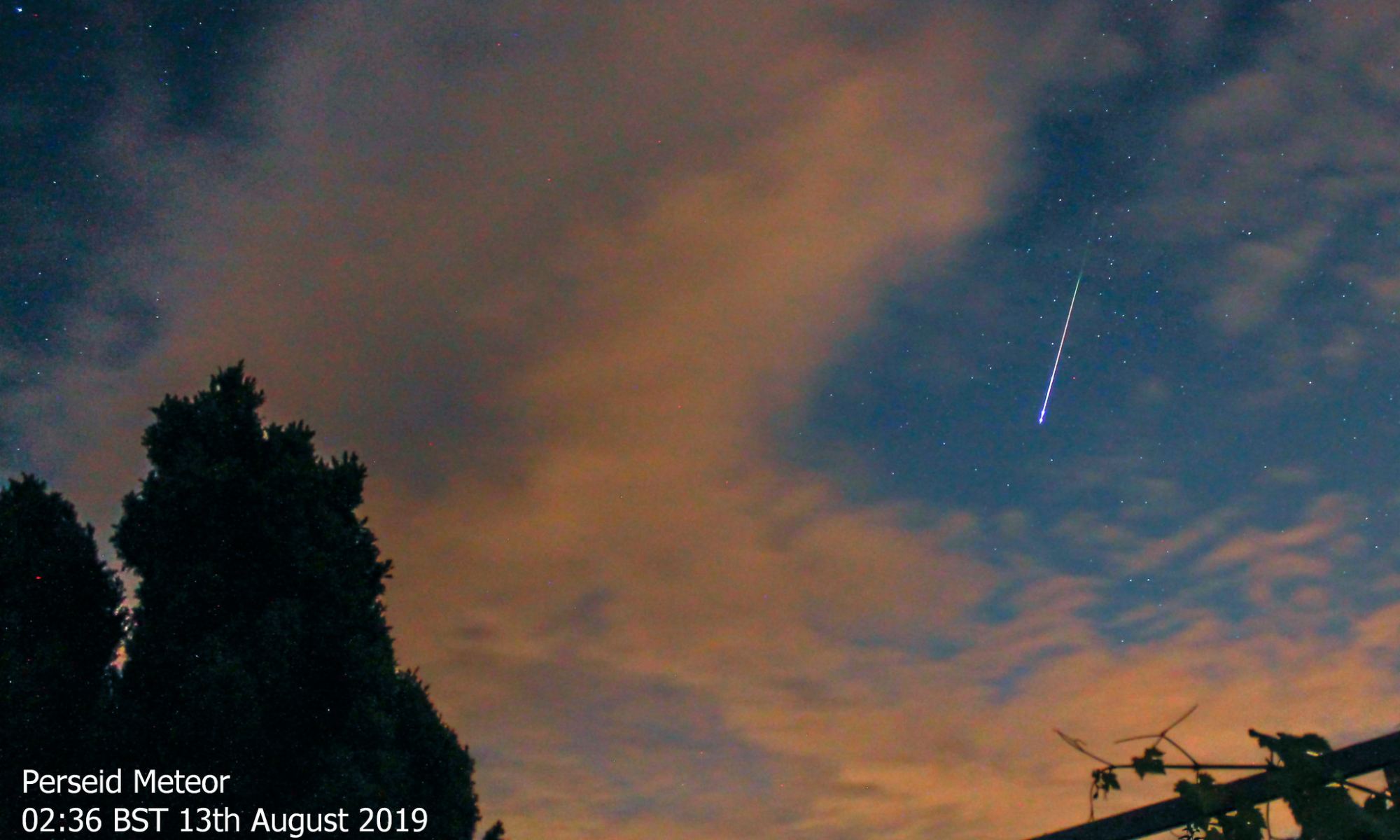Ready for the Perseids?
It’s August once again, and that means the Perseid meteors are inbound. This shower is a sure-fire bet starting this weekend, though 2020 sees the spectacle go down under somewhat challenging circumstances.
A meteor shower occurs when the Earth plows through an ancient debris stream laid down by a comet. This stream intersects the orbit of the Earth around the Sun, and was produced by the progenitor comet long ago. In the case of the August Perseids, the stream was generated by periodic comet 109P/Swift-Tuttle, which takes 133 years to orbit around around the Sun. Swift-Tuttle will reach perihelion again in 2126 AD.
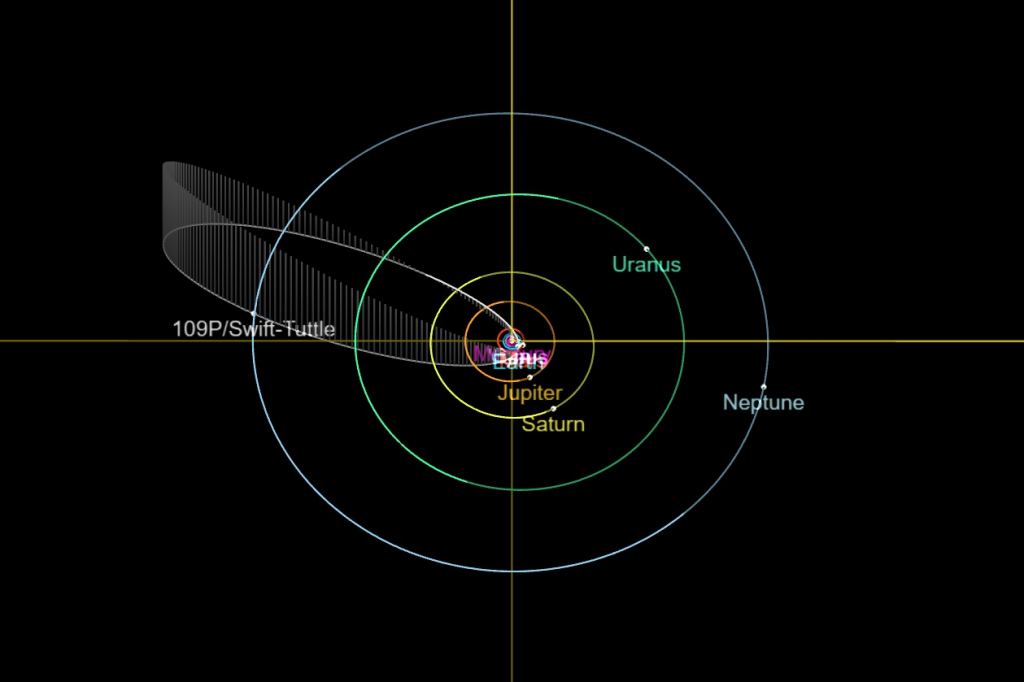
The meteors you see streaking across the sky on an August evening are dust to pea-sized, briefly leaving a glowing ionized trail as they burn up in the upper atmosphere. Meteors from a given shower appear to come from a radiant, a fixed point in the sky. Of course, this is an illusion which produces a retro Star Trek-like effect as meteors intercept the Earth from a vanishing point just ahead of the planet. The Perseids hail from a radiant near the star Eta Persei in the constellation of Perseus the Hero, which gives the shower its name. Note that in modern times, the radiant strays a bit into the nearby constellation of Cassiopeia.
Prospects for 2020
The 2020 Perseids peak on Wednesday, August 12th at 6:00 Universal Time (UT)/2:00 AM Eastern Daylight Saving Time (EDT), favoring eastern North America. Expect a Zenithal Hourly Rate (ZHR) of 110 near the shower’s maximum.
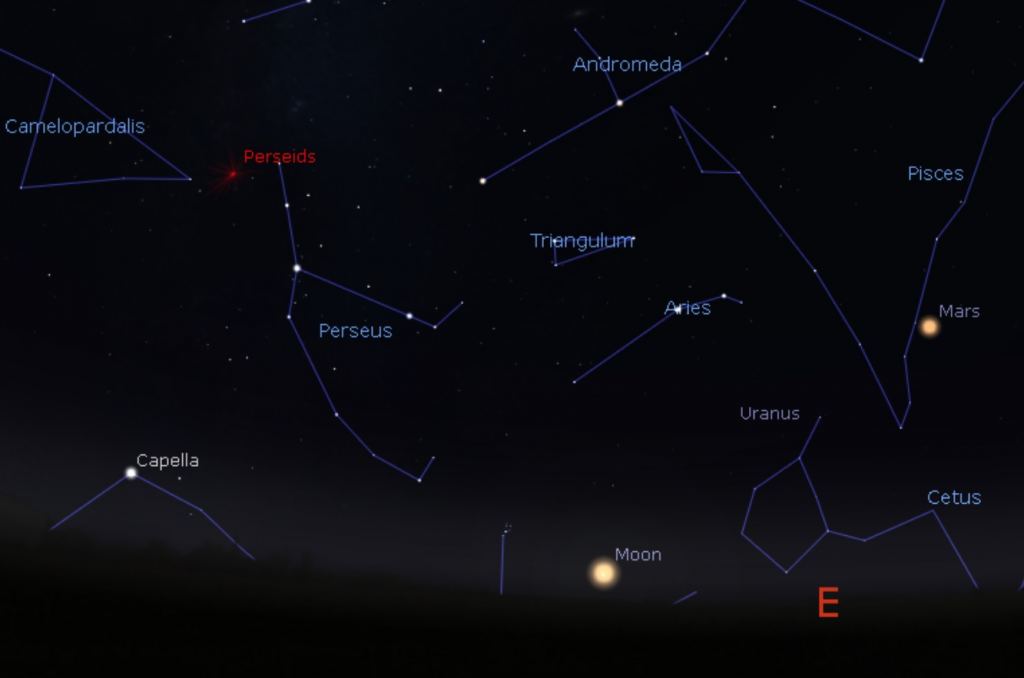
The Moon is just one day past Last Quarter phase at the shower’s peak, rising just before ~1:00 AM local. This makes for a narrow dark-sky window to glimpse the Perseids at their best, but don’t despair: the rising Moon will still sit low in the sky about 42 degrees from the shower’s radiant, and you can always block the fat waning crescent Moon out of view behind a well-placed building or hill.
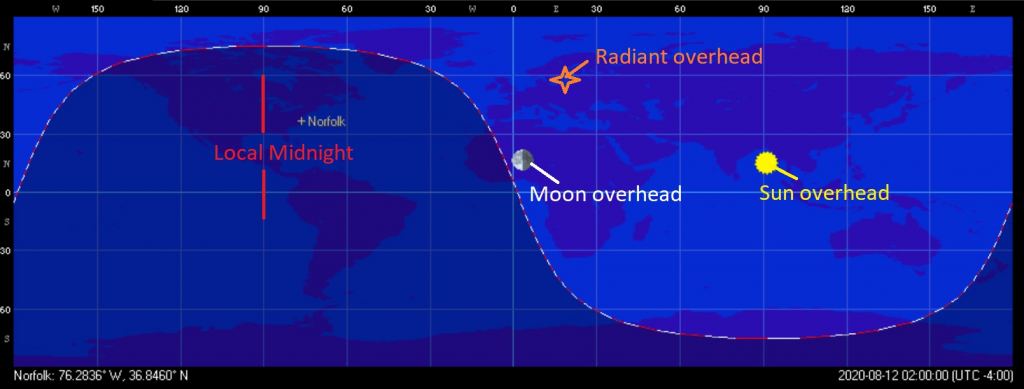
The Perseids on previous years have been a solid producer among annual meteor showers, with a Zenithal Hourly Rate (ZHR) of 60 in 2018 and 80 in 2019. The Perseids are getting very slowly overtaken by the December Geminids here in the early half of the 21st century as the year’s ‘top draw, though of course, the Perseids have the key advantage of occurring in the summer, when many skywatchers are camping out under dark skies.
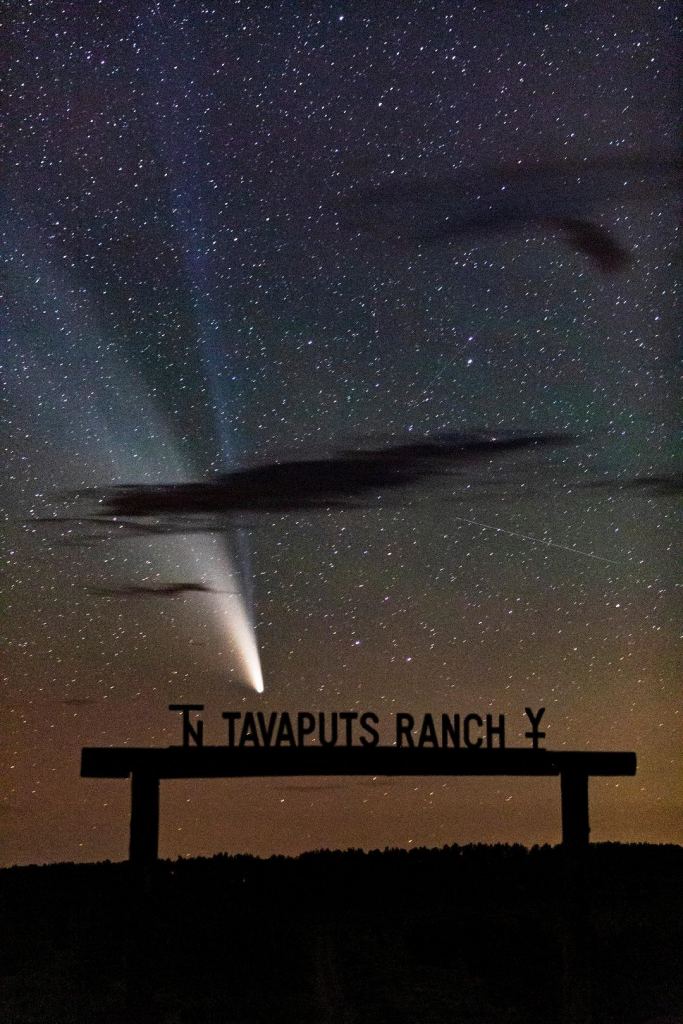
The Perseid meteor shower has been known of since antiquity… other meteor showers fade in and out of prominence over the centuries, but the Perseids are obviously a very stable and long-lasting meteor stream. Probably the most poetic name associated with the Perseids is “the Tears of St. Lawrence,” which refers to a Christian saint who was martyred in 258 AD.
Observing meteor showers is as simple as laying back in a lawn chair and watching as they silently slide by: no special equipment necessary. We like to look off at about a 45 degree angle from the radiant, to catch meteors in profile. Perseids can, however, appear anywhere in the sky, and it’s handy to space-out observers looking at different segments of the sky. This is particularly appropriate in this pandemic era of physical distancing… meteor shower-watching seems built for 2020 astronomy.
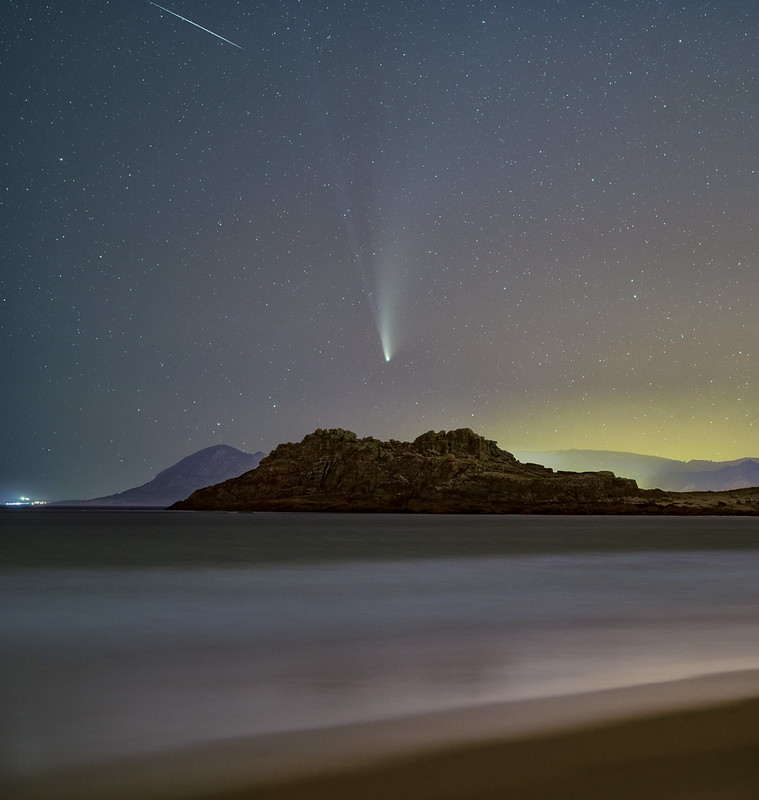
Photographing meteors is as simple as using a tripod-mounted DSLR camera with a wide-angle lens, taking long exposures (30” to a minute or so in duration) and seeing what turns up. We like to use an intervalometer to automate the process, and let the camera simply click away at the sky while we’re watching visually, and see what turns up in post review. Be sure to review those images carefully… I’ve visually missed nearly every meteor that turned up later on images.
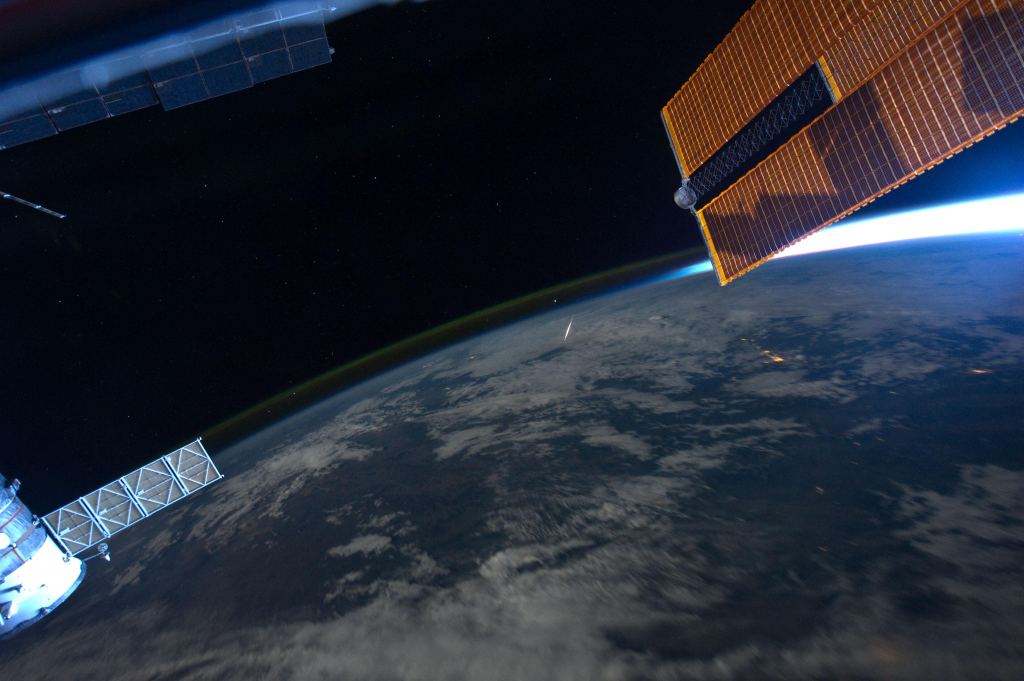
Count the number of Perseids you see in an hour and report ‘em to the International Meteor Organization (IMO) and you’re contributing to real science.
What’s more, Perseids can create those sort of family memories that last a lifetime. I remember watching the Perseids on a rare warm summer night in northern Maine with my mom and my brother Kenny. Suddenly, while we were contemplating the sky, a brilliant fireball lit up the scene. We all agreed later that this curious Perseid actually ‘hissed’ in its wake! I learned years later, that ‘audible meteors’ are a real and documented phenomenon. Meteors can also be ‘heard’ pinging and crackling like lightning on the FM radio dial.
Clouded out? The good folks at the Virtual Telescope Project 2.0 have got you covered, with a live webcast of the Perseids on August 11th, starting at 22:00 UT/6:00 PM EDT.
Be sure to catch the 2020 Perseid meteor shower, either in person or online.
Lead image credit: A Perseid from 2019. Image credit and copyright: Mary McIntyre

